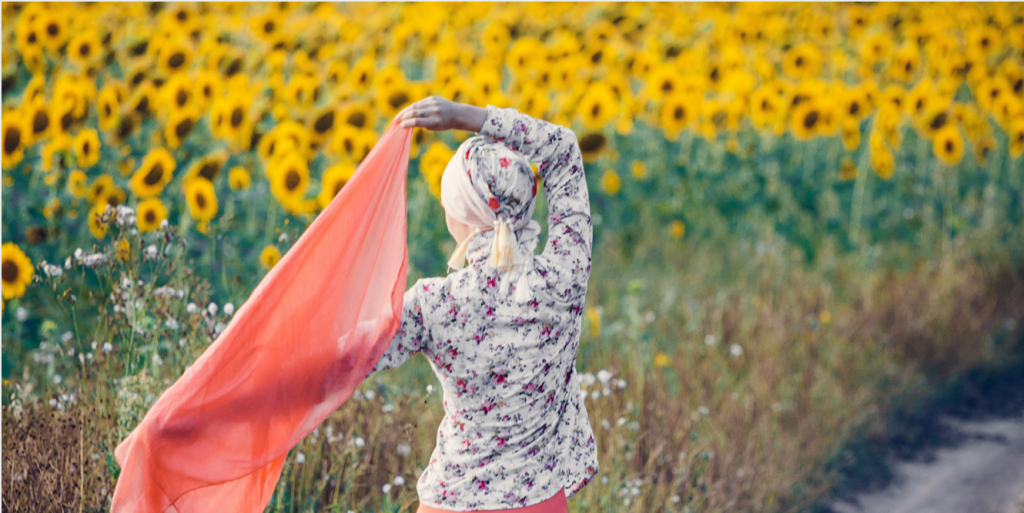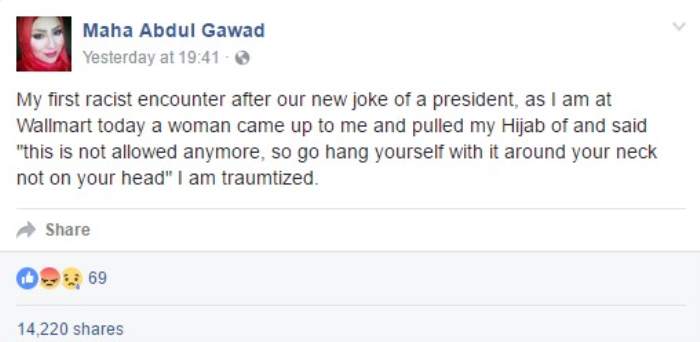
by Naila Sheikh
With the passing of 2016, I cannot help but think of the countless times Muslims were derogatorily labeled and degraded for the sake of politics in this year’s presidential election. As patriotic and law-abiding American Muslims, addressing us (yes…me, you, your neighbor and millions of Americans who are Muslim) as victims of an endless rhetorical analysis, was indeed shattering to our American identities and very hurtful.
Do the words “God Bless America” mean to be inclusive of Muslims? Can I, as an American Muslim, feel proud and included when POTUS refers to America as our incredible country? I heavily lean towards dissecting these words only because of the insecurity instilled in me by the American news media and, unfortunately, our president-elect.
“God” as a religious entity is used to authorize a higher being to bless our country, which in a sense is professing patriotism with the validation of the supreme “God” executing this action. We may be essentially seeking confirmation from God to bless us all. Ultimately, when all human possibilities run out, we are to direct ourselves to God. So then, since I am a firm believer of God, given the fact that I am a Muslim, wouldn’t that make me “America?”
This rhetorical analysis of a commonly used phrase in speeches and songs, especially those of patriotic nature, should be given ample attention. Are we, as Americans, to just mindlessly follow directives and sing lyrics for the sake of tradition? Or are we smart enough to ponder over the usage? We automatically assume that this command, devoid of a grammatical verb, but heavy in its proclamation, must mean a wish or a prayer unto the country we live in. And this assumption, albeit not a wrong one, can indeed spur arguments of how this phrase “God Bless America” is being used in the right or wrong context. While it is a generic statement, and maybe an overused one, the very basis of its origin must stem from the days when The Declaration of Independence was written and how our country arose to its powerful identity.
Maybe the usage of “America” encompasses the official wordings from America’s founding documents and also holds an emotional meaning with an inescapable, tangible content; its people, its landscapes, cultures, religions, industries and so forth. Then why do I feel excluded when blessings are bestowed on my beloved America, and why is my American Muslim identity offended, attacked, harassed and associated with terror? Why must I take the burden upon myself to feel guilty? Why can’t my country defend me, hold me, embrace me for who I am? Why am I stripped of my basic rights when walking down the street or into a grocery store, where my fellow Americans show aggression and feel entitled to pull off the hijabs from modestly-dressed Muslim women?

The overall utterance of “God Bless America” is fascinating when taken under the loop for analysis, especially given the current anti-Muslim rhetoric in our society. A proclamation such as this cannot be concluded by simply stating an opinion – it is to be studied in social milieus, considering the context of its usage and application. Unfortunately, for American Muslims, the journey to inclusion might be a long one, but I am hopeful that OUR rhetoric will change the game for the better.
 Naila Sheikh resides with her husband and two kids in Houston, TX. Born and raised in Holland, she has a keen interest to keep up with the current affairs around the world. Her everyday life, apart from playing mommy, also consists of Food Blogging on her website: NailasKitchen.com.
Naila Sheikh resides with her husband and two kids in Houston, TX. Born and raised in Holland, she has a keen interest to keep up with the current affairs around the world. Her everyday life, apart from playing mommy, also consists of Food Blogging on her website: NailasKitchen.com.




